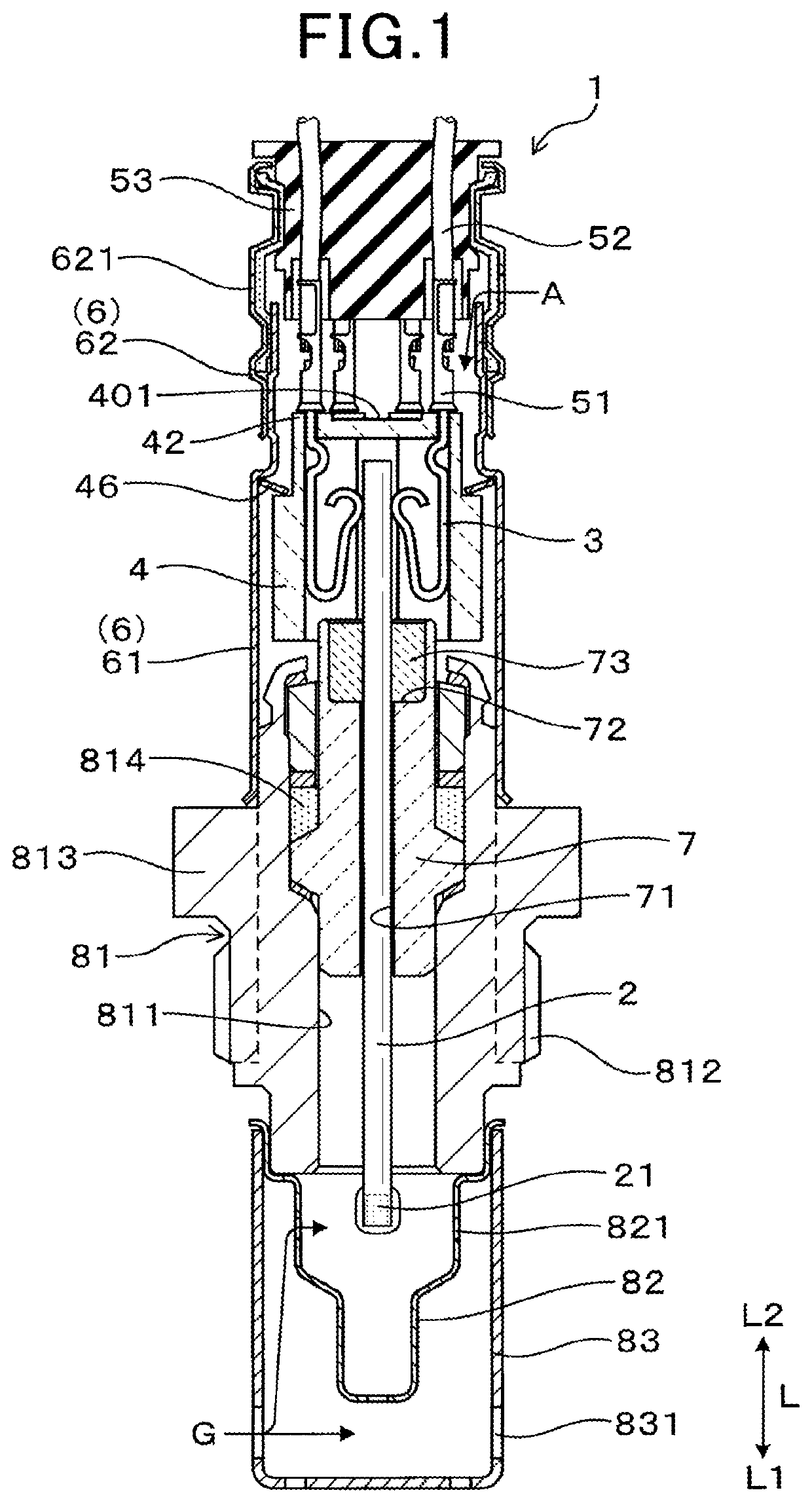Gas sensor
a technology of gas sensor and lead cover, which is applied in the direction of material electrochemical variables, coupling device connections, instruments, etc., can solve the problems of air water vapor entering the lead cover, and the sealing mechanism cannot hermetically seal the lead cover, so as to reduce leakage current and enhance the accuracy of measuring gas
- Summary
- Abstract
- Description
- Claims
- Application Information
AI Technical Summary
Benefits of technology
Problems solved by technology
Method used
Image
Examples
Embodiment Construction
[0042]Referring now to the drawings, particularly to FIG. 1, there is shown the gas sensor 1 according to an embodiment. The gas sensor 1, as illustrated in FIG. 1, includes the sensor device 2, a plurality of contact springs 3, the contact-spring insulator 4, a plurality of connecting terminals 51, and the lead cover 6. The sensor device 2 works to measure exhaust gas G that is a target to be measured. The contact springs 3 are, as clearly illustrated in FIG. 2, placed in electrical contact with the electrode leads 222 disposed on the sensor device 2 to achieve an electrical connection of the sensor device 2 with an external control device. The contact-spring insulator 4 has formed therein the holding holes 41 in which the contact springs 3 are retained. The connecting terminals 51 are joined to electrical leads 52, respectively, which connect the contact springs 3 with the control device. The lead cover 6 covers the contact-spring insulator 4 and the connecting terminals 51.
[0043]...
PUM
| Property | Measurement | Unit |
|---|---|---|
| size | aaaaa | aaaaa |
| height | aaaaa | aaaaa |
| height | aaaaa | aaaaa |
Abstract
Description
Claims
Application Information
 Login to View More
Login to View More - R&D
- Intellectual Property
- Life Sciences
- Materials
- Tech Scout
- Unparalleled Data Quality
- Higher Quality Content
- 60% Fewer Hallucinations
Browse by: Latest US Patents, China's latest patents, Technical Efficacy Thesaurus, Application Domain, Technology Topic, Popular Technical Reports.
© 2025 PatSnap. All rights reserved.Legal|Privacy policy|Modern Slavery Act Transparency Statement|Sitemap|About US| Contact US: help@patsnap.com



